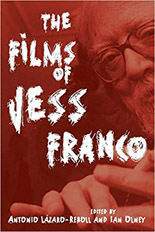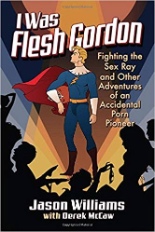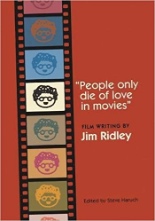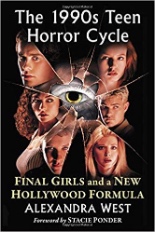
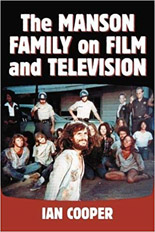 If, God forbid, you’re anything like me, upon seeing Ian Cooper’s The Manson Family on Film and Television, you might think, “Are there really that many movies about Charles Manson to merit a whole book?”
If, God forbid, you’re anything like me, upon seeing Ian Cooper’s The Manson Family on Film and Television, you might think, “Are there really that many movies about Charles Manson to merit a whole book?”
The short answer: No.
But if the scope were expanded to include those projects that were inspired by the Manson family’s reign of terror in the summer of 1969? Well, then my answer would be a resounding “yes!” And since that is what Cooper has done, that’s a “yes,” my children.
It’s a damn good book, too, on a subgenre about which you didn’t even know you wanted to read. With a blend of the historical and the critical, of course Cooper covers the 1976 TV miniseries Helter Skelter, still the definitive pic on the subject (so definitive it forever typecast star Steve Railsback as a loon), as well as the Oscar-nominated Manson documentary from ’73.
 However, what makes the McFarland & Company paperback worth the price to cinephiles is the exhaustive coverage of the exploitation industry’s various entries into the thematically related sweepstakes (although, it should be noted, the book is not exploitative). The net spreads wider than one might think, from well-known cult classics like David E. Durston’s I Drink Your Blood, Michael Findlay’s Snuff and Wes Craven’s The Last House on the Left to such lurid and languid obscurities as Wrong Way, Because of the Cats and the X-rated The Love-Thrill Murders, starring Troy Donahue.
However, what makes the McFarland & Company paperback worth the price to cinephiles is the exhaustive coverage of the exploitation industry’s various entries into the thematically related sweepstakes (although, it should be noted, the book is not exploitative). The net spreads wider than one might think, from well-known cult classics like David E. Durston’s I Drink Your Blood, Michael Findlay’s Snuff and Wes Craven’s The Last House on the Left to such lurid and languid obscurities as Wrong Way, Because of the Cats and the X-rated The Love-Thrill Murders, starring Troy Donahue.
To this day — and even tomorrow, with Quentin Tarantino’s upcoming Once Upon a Time in Hollywood set for 2019 — the Manson murders still inform and inspire entertainment, like the horror hit The Strangers and the wretched DTVer Wolves at the Door. From Kenneth Anger to Diane Sawyer, from animation to pornography, no cinematic piggy appears to have escaped Cooper’s probing pen. —Rod Lott

